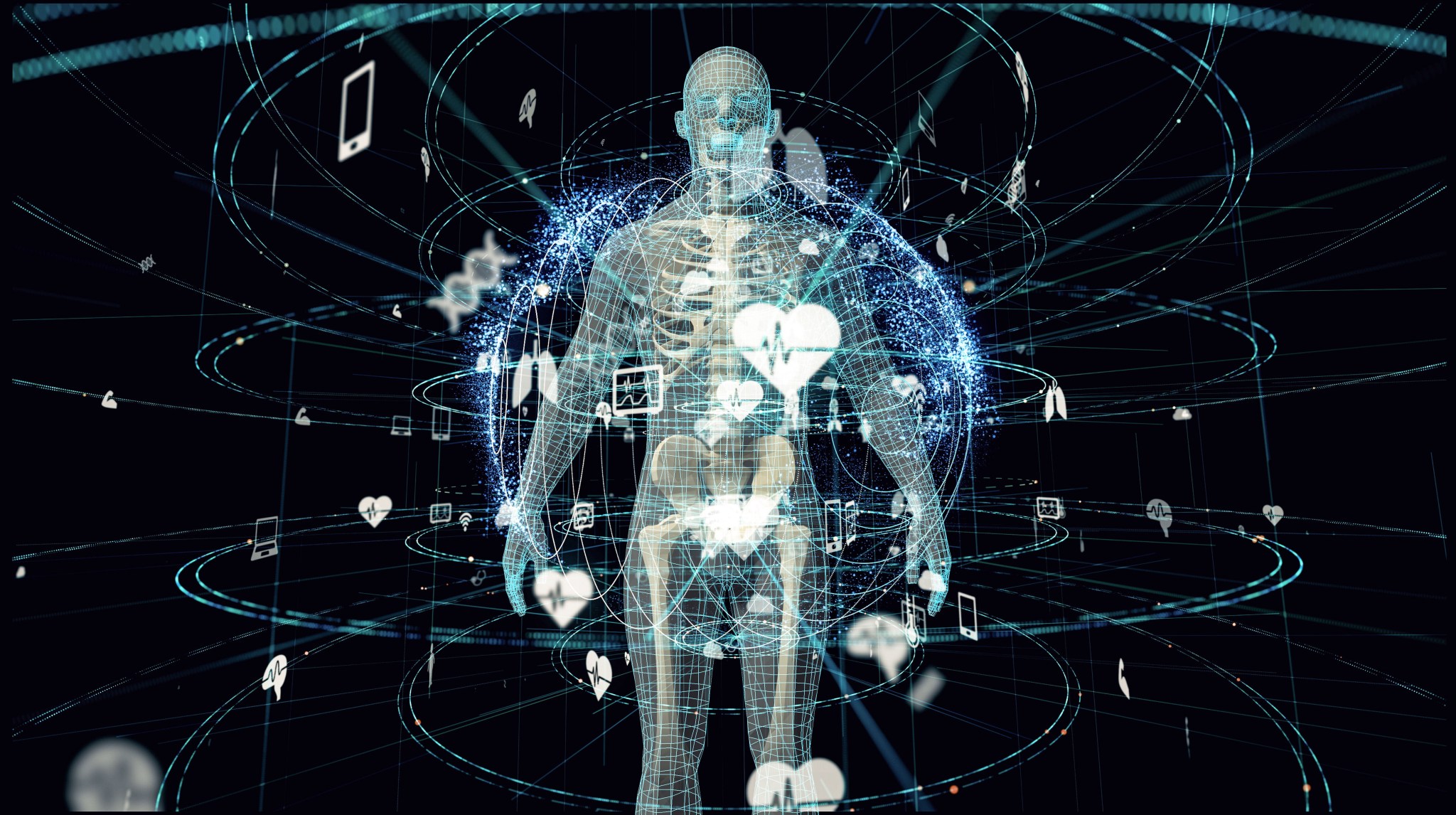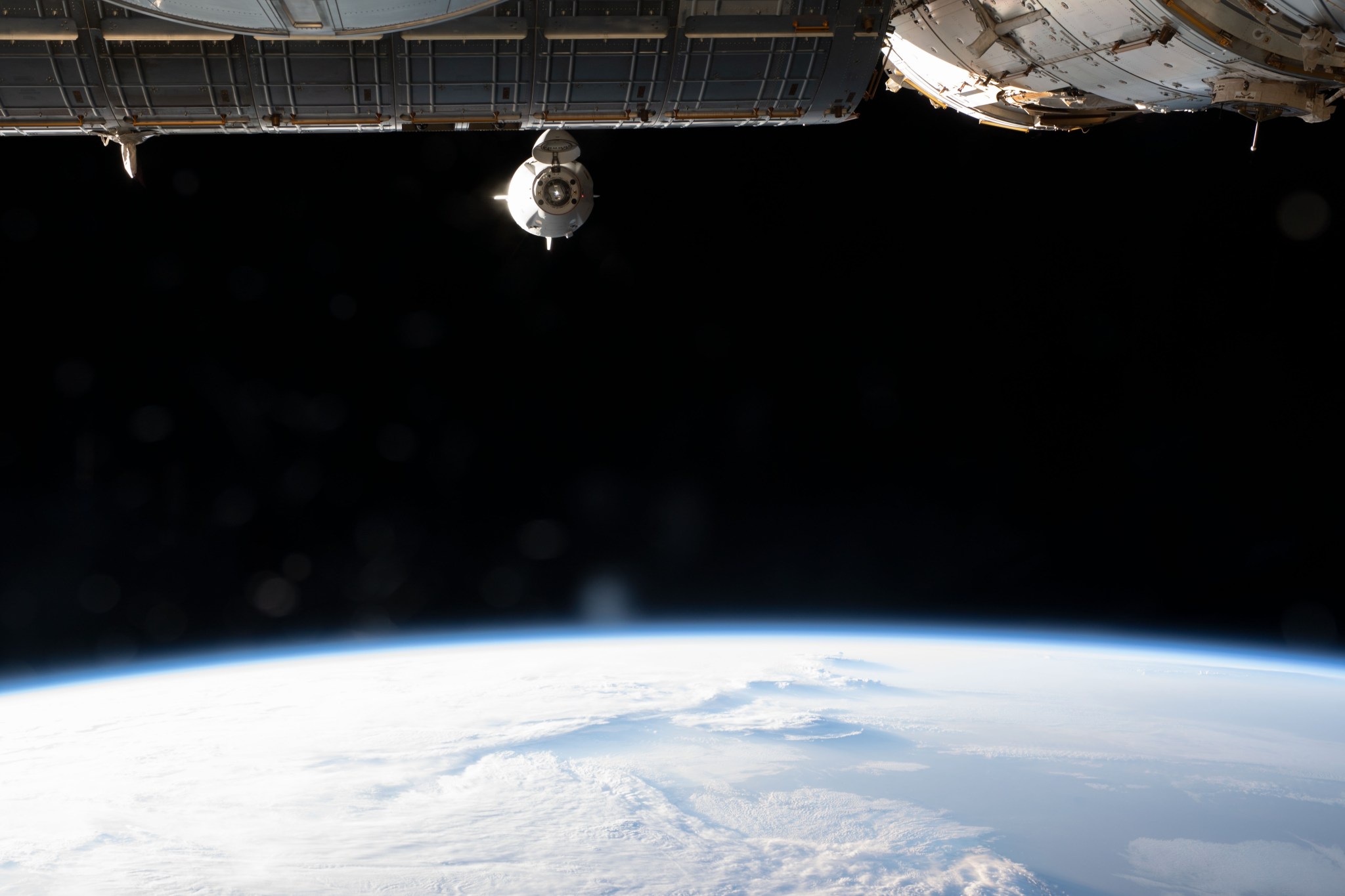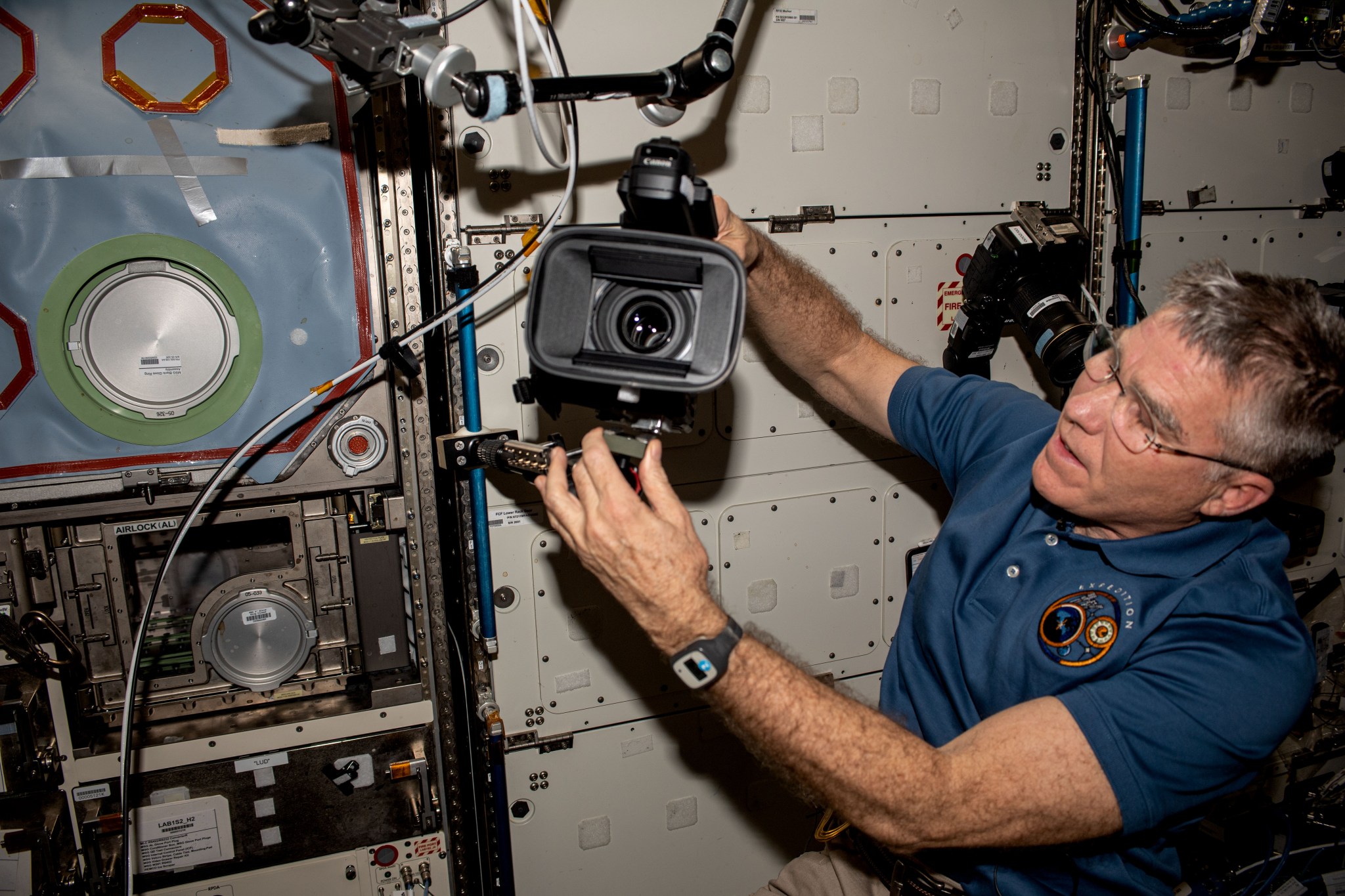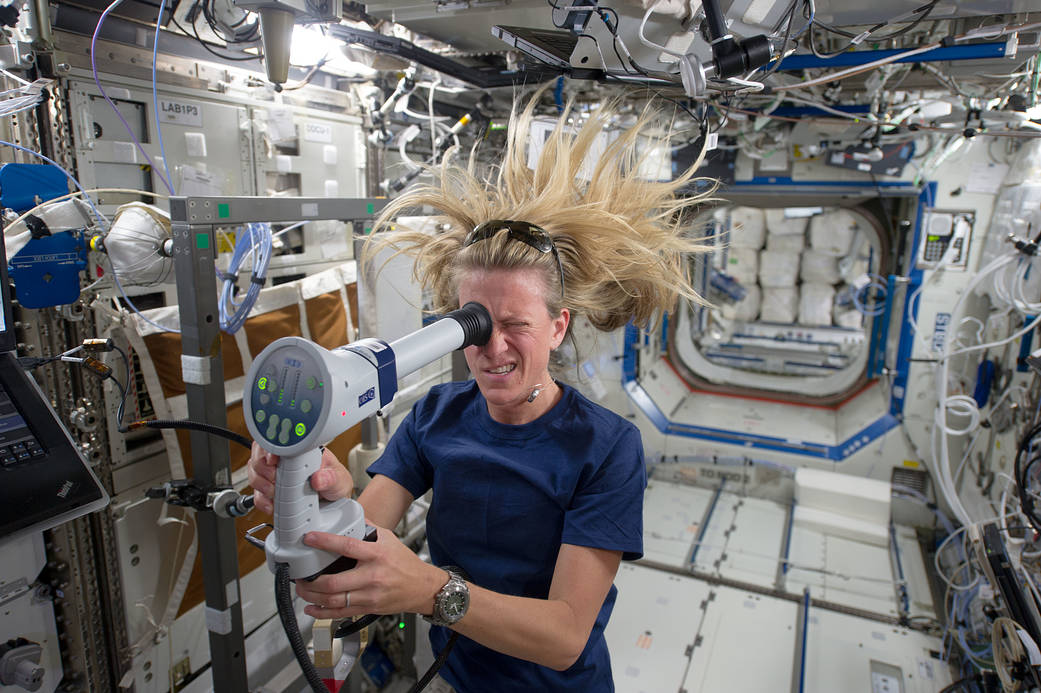Crew members aboard the International Space Station conducted scientific investigations during the week of May 8 that included monitoring how spaceflight affects immune function, testing a student-designed camera mount, and assessing a platform for automated analysis of cardiovascular health.
Here are details on some of the microgravity investigations currently taking place aboard the orbiting lab:
Inflight Immune Function Testing
Immunity Assay, an investigation from ESA (European Space Agency), uses a blood test to monitor how spaceflight affects immune function. Previously, this test could only be performed on Earth pre- and postflight, but a newly developed process makes it possible to execute inflight, which provides a clearer assessment of any immune changes. Results contribute to the understanding of immune system response to microgravity and how stress hormones may modulate this response, which could support development of countermeasures for immunological issues during long-duration spaceflight. The test also could be part of an approach to monitor immune performance in astronauts and people on Earth. Crew members collected and processed samples for the investigation during the week.
A Clamp for Cameras
Hunch Ball Clamp Monopod tests a mounting system for cameras used to track targets on the ground or to take images and video inside the space station. The device provides a temporary but stable platform for cameras, making operations easier and faster for the crew, and easily moves out of the way when not needed. The platform has potential applications in certain settings on Earth as well. NASA’s HUNCH mission provides students with the opportunity to participate in hands-on design and fabrication of products for NASA. Astronauts had requested a way to correctly position cameras and hold them stable. During the week, crew members used the clamp to take images and evaluated its functionality.
Heart Monitoring, Automated

Space Health, an investigation from CSA (Canadian Space Agency), uses the wearable Bio-Monitor system to assess the effect of space travel on heart health. It also evaluates integrating the Bio-Monitor system with the Artemis automated analysis platform to provide cardiovascular monitoring on future space missions. Such automated systems are needed as future missions travel farther from medical support. Integrating other parameters into the platform could provide a more comprehensive health status assessment, which also could be useful in intensive care units on the ground. During the week, crew members wore the garment and headband for a 48-hour investigation run.
Other Investigations Involving the Crew:
- JEM Water Recovery System from JAXA demonstrates technology to generate potable water from urine. The system could contribute to life support systems on the space station and future exploration missions.
- Ring Sheared Drop-IBP, sponsored by the ISS National Lab, studies the behavior of high-concentration protein fluids and tests computer models for predicting that behavior. More accurate models could enable production of next-generation medicines for treating cancers and other diseases.
- Airborne Particulate Monitor (APM) demonstrates an instrument to measure the concentration of particles in the space station’s air. Maintaining air quality in the space station is vital for crew member health, but no capability currently exists to verify that maximum allowable concentrations of particles are met.
- AstroPi, an investigation from ESA, uses two augmented Raspberry Pi computers to support an education program that encourages students to study scientific and technical disciplines and to understand the benefits, challenges, and importance of space for Europe.
- Standard Measures uses cognition tests, sleep questionnaires, blood samples, and a variety of other data to examine how crew members adapt to living and working in space. Results also help monitor the effectiveness of countermeasures to maintain crew health and well-being, supporting future long-duration missions.
John Love, ISS Research Planning Integration Scientist
Expedition 69

































